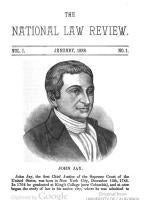How has the legal field evolved over the years? How has this impacted the current crop of attorneys? And how will these neophyte attorneys fit in with their more seasoned counterparts? Attorney and seven times previously published author Ursula Furi-Perry explores these questions in her latest, The Millennial Lawyer, a self-labeled “dual guidebook” that addresses both Generation Y attorneys and the Baby Boomerer generation of practitioners as it expounds on their differences in perspective. These differences extend to work ethic, backgrounds, communication styles, personal motivations, notions of professionalism, job-related goals and more, all of which serve as key in shaping the law firm culture.
The Generation Y attorneys, defined in the guide as attorneys born in the late 1970s to date, prove to be a topical area of discussion as they continue to flood law firms. This is due to a steadily rising number of students matriculating from law schools and displacing older attorneys opting for retirement, thus resulting in a melting pot law firm environment that can potentially breed conflicts as the novice and practicing attorney work side by side. Mr. Furi-Perry writes with the purpose of not only dispelling the stereotype of the sluggish, needy and disloyal fledgling attorney, but ultimately to maximize productivity and collegiality in law firms as the different generations of practitioners increasingly find themselves sharing office space, work assignments and personal stories by the water cooler.
In this classic battle between old versus new, Ms. Furi-Perry, a millennial lawyer herself, enacts the role of moderator between the two different sides, offering doses of insight and analysis into their respective value systems in order to improve dialogue. Indeed, the guidebook reads like a mediation session as both common ground and generational gaps between each group are identified, explicated and then capitalized on for the greater interest of building the Ideal Work Environment.
While the Gen Yers and baby boomers are described in broad, general terms, the ABA-published guidebook is very specific in its prescribed so-called “best practices in working.” Its contents include twelve chapters, footnotes, an index and three appendixes geared towards Generation Y attorneys featuring a survey, self-reflective questions and career resources, for a grand total of 233 pages. In each chapter, Ms. Furi-Perry tackles an often misconstrued aspect of the millennial lawyer, starting with bulleted key points and a probing discussion complete with sociological research in cultural and historical trends, statistical analysis and actual personal anecdotes from both generations of attorneys. She delves still deeper as she follows with detailed, practical tips on how to navigate the law firm environment, first to the seasoned practitioner managing new recruits, and then to the neophyte lawyer adjusting to a somewhat foreign environment. The guidebook thus serves as far more than a theoretical study of the new kids on the block versus the yesteryear lawyers—it is a practical manual acclimating both groups to an increasingly diverse, intergenerational firm environment.
A notable example from the guidebook of ideological clashes between both generations includes the examination of how the millennial lawyer tends to seek out feedback about her job performance. While this may be interpreted as neediness by the ‘ole-skool practitioner who may be used to a more “sink or swim” approach, the reality is that law firms prosper when their new recruits prosper, and therefore training new talent is essential to winning the game. Ms. Furi-Perry advocates managing attorneys maintain a consistent, structured system to evaluate new associates’ work and suggests making use of a digital dashboard that will allow the associates to obtain immediate feedback from their supervisors right from their own desks. Further, she teaches millennial lawyers to par their task-specific questions to precise, important enquiries and request periodic reviews, as opposed to turning to their supervisor for answers to every question and constant feedback on their job performance.
While workplace dynamics are hardly elementary, the guidebook seeks to narrow the variables that may impede a law firm from thriving. The image of the green lawyer fresh out of law school cowering with child-like intimidation of the oppressive partner looming at the top of the hierarchal ladder appears obsolete and disingenuous. Instead, adaptation and compromise are the two-pronged name of the game if we all want to get ahead.
Authored by S. Merchant



 i
i


